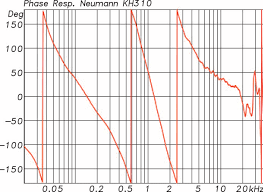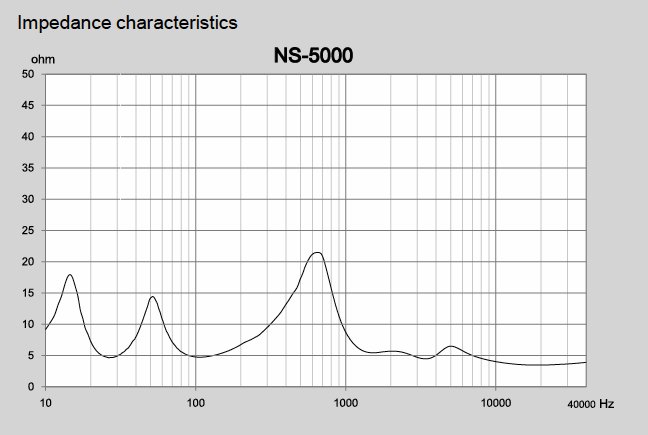makes sense, yet is what causes those differences not as interesting?I think we are well served to go back to the original post for the intent of the thread. This was about hearing two really different speaker types, one modern, the other vintage and then commenting on sound and involvement.
Modern speakers vs Vintage speakers
- Thread starter thomask
- Start date
You are using an out of date browser. It may not display this or other websites correctly.
You should upgrade or use an alternative browser.
You should upgrade or use an alternative browser.
I have seen deteriorated Yamaha NS-1000 drivers. They’re certainly not pure beryllium. They are plastic with beryllium plating. And sounds plastic. Big and much better Yamaha NS -2000 is not marginally different which I used for a while (below).
View attachment 126659View attachment 126660
Yamaha’s beryllium has nothing to do with TAD 4003 or 4001 or modern counterparts .
Yamaha - Deutschland
see, that is the grey area...certainly not vintage but certainly not modern as well?
IMHO it's not a new driver, but indeed a reproduction using modern materials, I wouldn't call that modern.
Ok lets compare date of manufacture say with Western Electric original 1920 and say a repro from 2022. How can you be not sure is 2022 Vintage??
It is a reproduction, it is a hybrid not an original that didn't exist until it's DOM.
Rob
Last edited:
I think we are well served to go back to the original post for the intent of the thread. This was about hearing two really different speaker types, one modern, the other vintage and then commenting on sound and involvement.
What am I missing thought it started here??
Rob
Modern speakers vs Vintage speakers
Yesterday the wedding of my son was done beautuflly in front of 100 guests. I dropped in some audio shops in Seoul, Korea today. 1. I listened to Magico A5 driven by Sim Audio integrated. The owner of shop mentioned that Octave vacuum amp fitted with KT150 is the best to drive A5, but not...
can you please elaborate? I'm having a hard time understanding what you are trying to say, really trying to as I think it makes sense but I'm thick today ;-)Ok lets compare date of manufacture say with Western Electric original 1920 and not sure 2022. How can you be not sure is 2022 Vintage??
It is a reproduction, it is a hybrid not an original that didn't exist until it's DOM.
Rob
Very much so. The differences between early and contemporary designs in themselves are important but what within the designs actually causes the differences we experience is something we can learn even more from.makes sense, yet is what causes those differences not as interesting?
Differences in design can be categorised under differences in the context (the design, the era, the measurements and the material spec) and differences in the spirit (the character or nature of the sound and how it looks and how it relates to us, how it enables the music and how listening through it makes us feel). So some designs could be contemporary in some areas of context but traditional in others… similarly a design could be contemporary in actuality or in appearance but how it sounds or renders musically can be more in the spirit of the speakers of earlier eras… I’m not sure any characterisation is absolute or exactly a changepoint in a timeline.
Being able to understand why a change in context (the objective elements) creates a change in spirit (the subjective experience) is a baseline of good design analysis… and probably the reason for quite a few of the arguments that we have in audio.
Last edited:
What was written there is not important cause I saw with my own eyes and touched with my own hands to those drivers. They're a kind of plastic. I didn't like those Yamaha speakers back then and I still don't. NS-690 is the best of the bunch, better than NS-1000 and better than NS-2000Read marked oneYamaha - Deutschland
de.yamaha.com

Last edited:
You disassembled the tweeter and midrange domes so they could actually touch them. You are the best, congratulations. The bass is papercone with Zylon coating. With the new 5000, Yamaha had learned from the past. They made all the drivers out of Zylon. It sounds more homogeneous. Zylon is harder then metal or carbon is used in racing boats. only for information.What was written there is not important cause I saw with my own eyes and touched with my own hands to those drivers. They're a kind of plastic. I didn't like those Yamaha speakers back then and I still don't. NS-690 is the best of the bunch, better than NS-1000 and better than NS-2000
I know how speaker cones made of Kevlar sound...pretty horrible at best IMHO, especially for tweeters
Stiffer does not mean it's harder than steel, hardness is measured in Rockwell... stiffness in tensile compression or young's modulus.

 en.wikipedia.org
en.wikipedia.org
Stiffer does not mean it's harder than steel, hardness is measured in Rockwell... stiffness in tensile compression or young's modulus.

Zylon - Wikipedia
Just listen to it with good amplifiers and then judge.I know how speaker cones made of Kevlar sound...pretty horrible at best IMHO, especially for tweeters
Stiffer does not mean it's harder than steel, hardness is measured in Rockwell... stiffness in tensile compression or young's modulus.

Zylon - Wikipedia
en.wikipedia.org
Not having the drivers made of Zylon makes tha tpretty difficult...would love to, until now paper works best for me but I'm open to anything....wood was second best so far
I listen music with paper too and i love it, but to say thats bad before you listen to it I don't think it's a good approach.Not having the drivers made of Zylon makes tha tpretty difficult...would love to, until now paper works best for me but I'm open to anything....wood was second best so far
I agree, so let me listen to those drivers...I did not intend or say that Zylon is bad, I said Kevlar is bad.I listen music with paper too and i love it, but to say thats bad before you listen to it I don't think it's a good approach.
can you please elaborate? I'm having a hard time understanding what you are trying to say, really trying to as I think it makes sense but I'm thick today ;-)
Lol I can see why. Updated the post to read:
Western Electric original 1920 and say a repro from 2022
Rob
I'd LOVE to be able to make that comparison and then (after the fact ) be informed about the differences..I just fear that not enough specifics are known about the 1920 original to make it worthwhile....I suspect the 2022 repro was made under a lot of assumptions trying to get close to the original without having all the required information.Lol I can see why. Updated the post to read:
Western Electric original 1920 and say a repro from 2022
Rob
Last edited:
I'd LOVE to be able to make that comaprison and then (after the fact ) be informed about the differences)...I just fear that no enough specifics are known about the 1920 original to make it worthwhile....I suspect the 2022 repro was made under a lot of assumptions trying to get close to the original without having all the required information.
That's a good point. I wonder how much of the original design documentation survived? Some of it was patented so that survives. The rest? Maybe someone will chime in and tell us. Yes it would be fun!
Here is an interesting read about the Shearer Horn System with references to John Hilliard
Rob
the problem as I see it is that time is against us, for my espressomachine dating back to the fifties the engineers are already long dead..not much details are left. For a speaker or speaker chassis design going back to the 1920ies?
Patents are greatm yet they typically omit the finer detail and focus on a general principle.
Patents are greatm yet they typically omit the finer detail and focus on a general principle.
Many vintage speakers measure pretty well for FR. When FR is bad, you can hear it below 10k pretty easy.
The phase arguments and crossover are kind of confused and nonsense. A lot of these speakers are not 1st order. That sort of thinking simply was not part of old speaker design for everything. However they may have actually listened to the speakers while designing them. And phase on a driver changes with frequency so if you think you are retaining the purity of it or whatever, that just is not true, the driver itself cannot maintain it. It has been known forever that it is about lining up rising phase because that is what we hear.
When it comes to duplicating vintage speakers typically people think they can make improvements, do something nicer, or overlook particular non-design choices that actually matter. There are a lot of reasons people cannot seem to do too well at replication. However Diatones are supposedly pretty good clones.
Many attributes of certain old speakers offend sensibilities. For example aluminum voice coils are the shit.
The phase arguments and crossover are kind of confused and nonsense. A lot of these speakers are not 1st order. That sort of thinking simply was not part of old speaker design for everything. However they may have actually listened to the speakers while designing them. And phase on a driver changes with frequency so if you think you are retaining the purity of it or whatever, that just is not true, the driver itself cannot maintain it. It has been known forever that it is about lining up rising phase because that is what we hear.
When it comes to duplicating vintage speakers typically people think they can make improvements, do something nicer, or overlook particular non-design choices that actually matter. There are a lot of reasons people cannot seem to do too well at replication. However Diatones are supposedly pretty good clones.
Many attributes of certain old speakers offend sensibilities. For example aluminum voice coils are the shit.
+ 1Many vintage speakers measure pretty well for FR. When FR is bad, you can hear it below 10k pretty easy.
The phase arguments and crossover are kind of confused and nonsense. A lot of these speakers are not 1st order. That sort of thinking simply was not part of old speaker design for everything. However they may have actually listened to the speakers while designing them. And phase on a driver changes with frequency so if you think you are retaining the purity of it or whatever, that just is not true, the driver itself cannot maintain it. It has been known forever that it is about lining up rising phase because that is what we hear.
When it comes to duplicating vintage speakers typically people think they can make improvements, do something nicer, or overlook particular non-design choices that actually matter. There are a lot of reasons people cannot seem to do too well at replication. However Diatones are supposedly pretty good clones.
Many attributes of certain old speakers offend sensibilities. For example aluminum voice coils are the shit.
Phase responce threeway active speaker

Similar threads
- Replies
- 272
- Views
- 43K
- Replies
- 256
- Views
- 45K
- Replies
- 483
- Views
- 59K
- Replies
- 44
- Views
- 11K
- Replies
- 400
- Views
- 149K
| Steve Williams Site Founder | Site Owner | Administrator | Ron Resnick Site Owner | Administrator | Julian (The Fixer) Website Build | Marketing Managersing |







